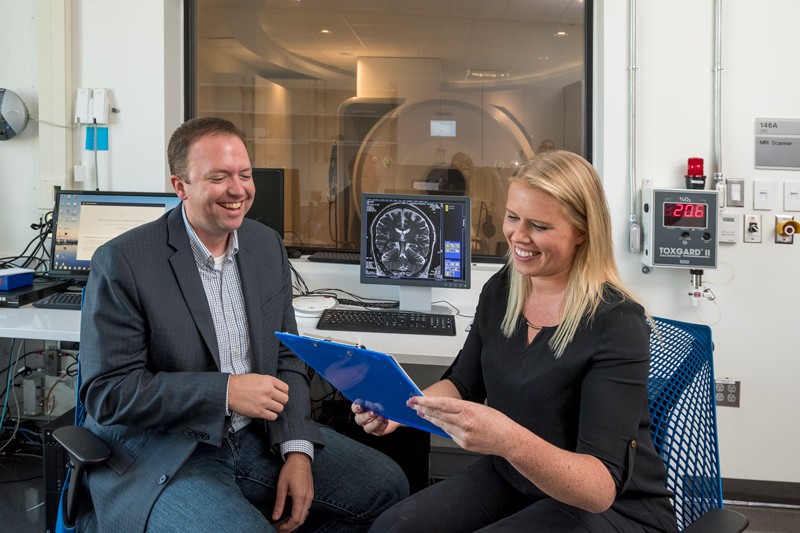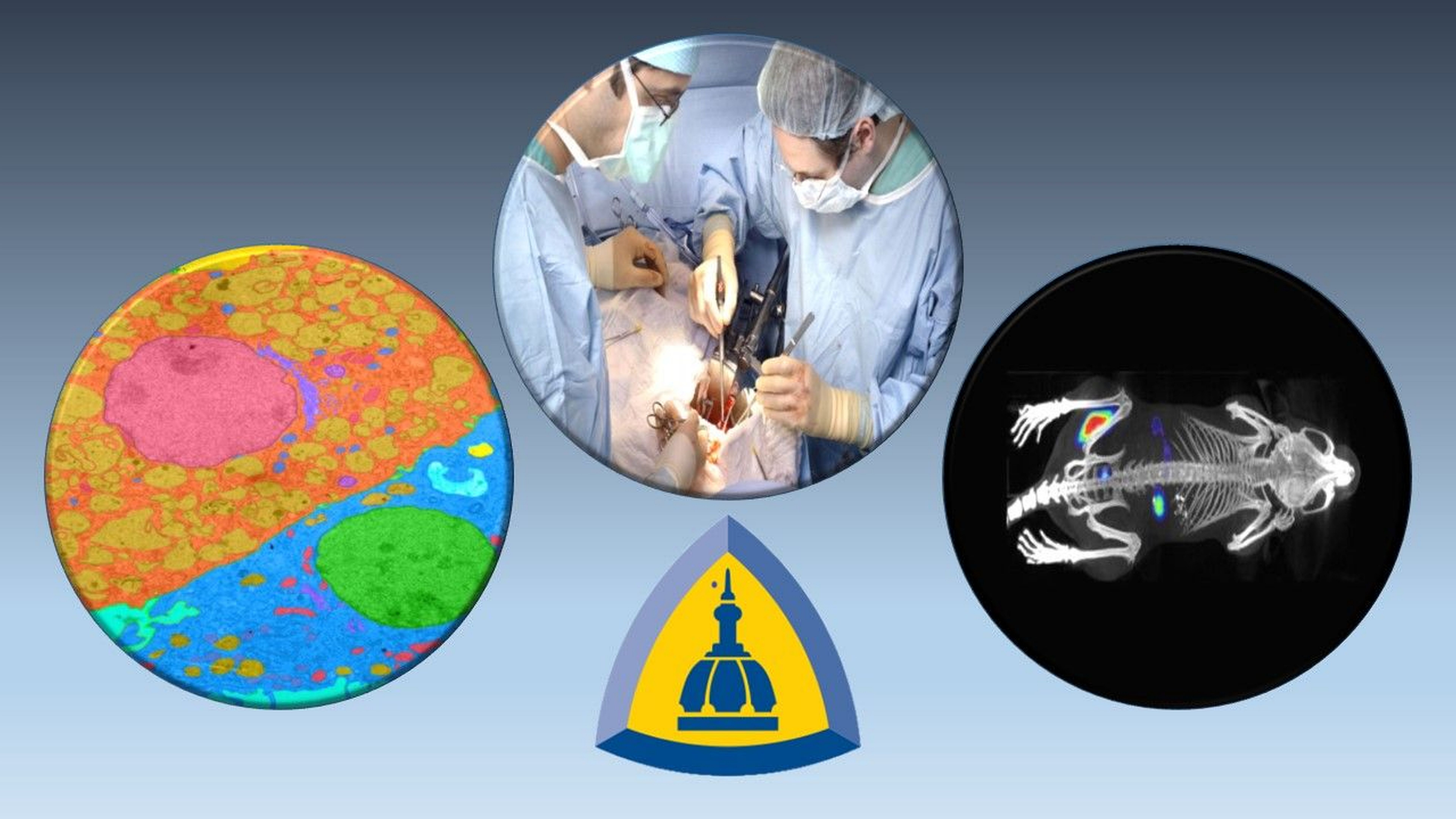The brains of people who reduce their drinking, as well as of people who quit drinking entirely, have greater volume in certain regions than people who drink more heavily, according to a new study of adults treated for alcohol use disorder.
Tag: Magnetic Resonance Imaging
Studying brain activity of swallowing helps researchers understand aging, disease
Researchers at the Beckman Institute for Advanced Science and Technology, Carle Hospital, and Purdue University teamed up to develop a new imaging tool that will improve our understanding of how the brain controls swallowing in both healthy patients and those experiencing a swallowing-related disorder. Their work will be funded by a five-year grant expected to total $2.8 million from the National Institute on Aging of the National Institutes of Health.
Pioneering MRI imaging method captures brain glucose metabolism without the need for administration of radioactive substances
A research team has developed a completely new magnetic resonance imaging (MRI) approach. Using a harmless glucose solution, the procedure generates reliable results and – in principle – can be used with all common MRI scanners.
MRI turns 50: Expert Brad Sutton explains its history and role in understanding the aging brain
March 16, 2023, marks 50 years since Paul Lauterbur published his seminal Nature paper establishing zeugmatography — now familiar to most as magnetic resonance imaging or simply MRI — as a viable way to visualize objects with a magnetic field…
JMIR Formative Research | Demonstrating Fetal Head Moldability and Brain Compression
JMIR Publications published “Using Magnetic Resonance Imaging During Childbirth to Demonstrate Fetal Head Moldability and Brain Compression: Prospective Cohort Study“ in their journal JMIR Formative Research, which mentions that improvements in risk assessment and anticipatory interventions are constantly needed. The…
Don’t Let Epilepsy Go Unchecked
Many think of epilepsy, a neurological disorder affecting 3.4 million Americans, as a chronic condition marked by occasional seizures. But the disease can be deadly, so it is essential for patients to get their seizures under control with proper treatment, said Lisa Bateman, MD, director of the Cedars-Sinai Health System Surgical Epilepsy Program.
Brain ‘zips and unzips’ information to perform skilled tasks
The human brain prepares skilled movements such as playing the piano, competing in athletics, or dancing by ‘zipping and unzipping’ information about the timing and order of movements ahead of the action being performed, a new study reveals.
Researchers Unveil New Collection of Human Brain Atlases that Chart Postnatal Development
Human brain atlases can be used by medical professionals to track normative trends over time and to pinpoint crucial aspects of early brain development. By using these atlases, they are able to see what typical structural and functional development looks like, making it easier for them to spot the symptoms of abnormal development, such as attention-deficit / hyperactivity disorder (ADHD), dyslexia, and cerebral palsy.
Using machine learning to predict brain tumor progression
Researchers at the University of Waterloo have created a computational model to predict the growth of deadly brain tumours more accurately.
New sensor uses MRI to detect light deep in the brain
Using a specialized MRI sensor, MIT researchers have shown that they can detect light deep within tissues such as the brain.
Focused ultrasound treatment for essential tremor highly effective after 5 years
A scalpel-free, high-tech form of brain surgery pioneered at UVA Health offers long-term relief for patients with essential tremor, a common movement disorder, a five-year review shows.
Researchers combine data science and machine learning techniques to improve traditional MRI image reconstruction
University of Minnesota Twin Cities researchers have found a way to improve the performance of traditional Magnetic Resonance Imaging (MRI) reconstruction techniques, allowing for faster MRIs without relying on the use of newer deep learning methods.
New Research on MRI Biomarkers May Aid in Evaluating Potential Treatments for Peripheral Nerve Diseases
Jun Li, M.D., Ph.D., professor and chair of the Department of Neurology at the Wayne State University School of Medicine, recently received a $246,172 R-21 grant from the National Center for Advancing Translational Sciences of the National Institutes of Health (NIH) to develop new strategies for assessing appropriate treatments of peripheral nerve diseases.
MRI frequently underestimates tumor size in prostate cancer
Improving imaging processes will lead to more successful treatments and help reduce morbidity in men with the disease.

A WINDOW INTO ADOLESCENCE
Why do some adolescents take more risks than others?
New research from University of Delaware Biomedical Engineer Curtis Johnson and graduate student Grace McIlvain suggests that two centers in the adolescent brain, one that makes them want to take risks and the other prevents them from acting on those impulses, physically mature at different rates and that adolescents with large differences in the rate of development between these two brain regions are more likely to be risk-takers.

RESEARCH NEWS TIP SHEET: STORY IDEAS FROM JOHNS HOPKINS
The June 4, 2020, issue of the weekly Johns Hopkins Medicine research newsletter on topics NOT related to COVID19. Stories this week: study shows pollutant may be more hazardous than previously thought; psilocybin tampers the brain’s ego center; and getting urban youth to wear bike helmets.